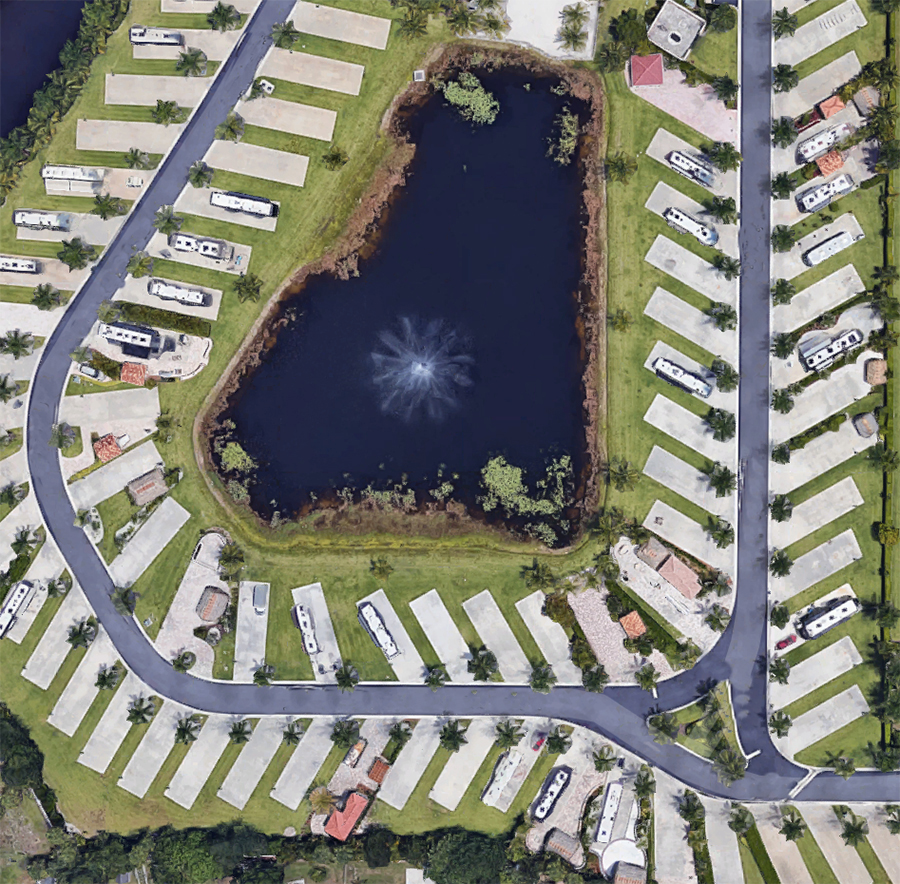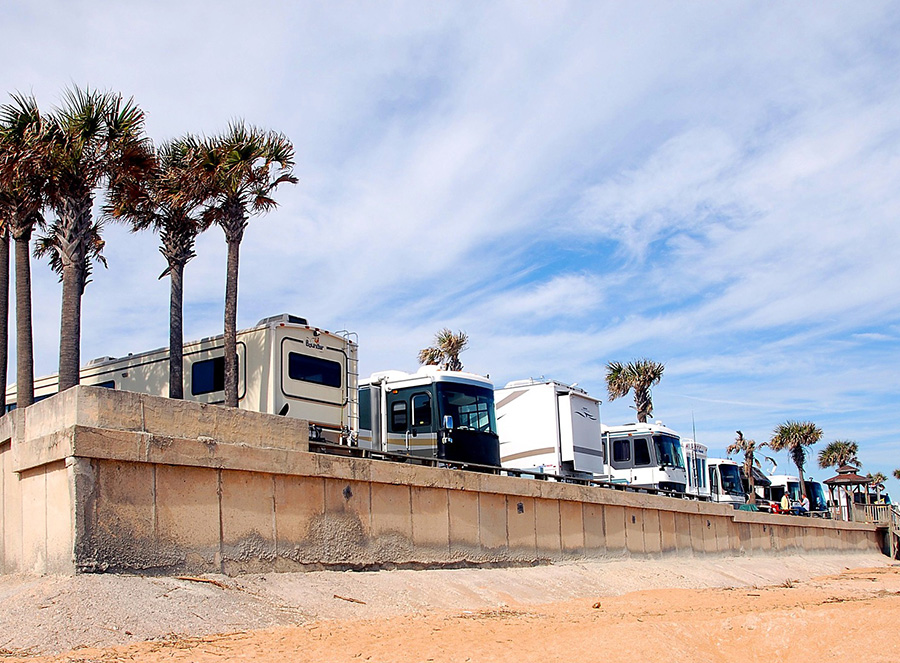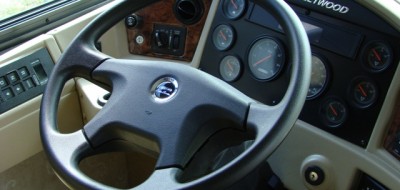Backing up your RV — a hassle-free guide.
So you survived the 380-mile drive to your favorite RV park on the lake. You battled the traffic jam 50 miles back where the detour took you through a narrow, bumpy bypass. Now, you’re given your assigned site and begin the last leg of your trip. There it is! Probably the only site in camp without an RV already parked on it. But backing the 40-foot class A into this spot will be a challenge. Your RV backing skills will be called upon.
Use The Mirrors
The mirrors are your primary visual tool. Video cameras are only enhanced aids and should not be relied on as your main visual guide. Hanging out the driver window may give you a panoramic view of that side and a breath of fresh air, but it is not necessarily going to get you into that spot safely. Learn to use and trust your mirrors.
Backing Skills
 Maneuvering and backing into an RV site frequently leads to accidents. While most are minor in nature, an element of danger of personal injury or serious damage does exist. There’s also the embarrassment factor, as by now a group of campers, some with cocktails in hand, are settling down to watch the show.
Maneuvering and backing into an RV site frequently leads to accidents. While most are minor in nature, an element of danger of personal injury or serious damage does exist. There’s also the embarrassment factor, as by now a group of campers, some with cocktails in hand, are settling down to watch the show.
Let’s look at how to best to safely get this rig docked. Now, even if you have cameras, you’ll need some help. So first off, always use a spotter. If your traveling partner is unable, or you are traveling alone, ask a fellow camper. Your spotter should be located at the rear on the outside of the turn angle. This will allow them to observe the rear and the possible blind front end that is moving in an outward direction.
Keep in mind that the highest frequency of accidents backing into a site occurs to the front right-hand fender while backing to the left with the inside of the turn on the driver side. This is due to this area being a blind spot, even with onboard cameras. Your spotter must observe this area for you. The driver then can watch the inside of the turn. If, at any time, you lose sight of the spotter, stop. Only move slowly back while the spotter is visible and motioning you to do so.
Watch The Rear Axle(s) Pivot Point
Lower the mirror view on the inside of the backing turn until you can see the rear axle(s) pivot point. The pivot point is the position where the rear tires swivel as the vehicle turns. Generally this is the center of the drive axle, or in the case of a tag axle equipped unit, a spot approximately equal to the center of the distance between the axle centers. This will allow you to better judge the optimum place and turning angle to best maneuver into the needed position. Also observe the tire’s track in relation to the ground’s surface.( i.e. concrete pad, grass edging, etc.)
 Overhead Clearance
Overhead Clearance
With all the activity going on when backing into a site, it is easy to forget to watch the overhead clearance. RV’s are high and can present issues in treed areas. Not only do you want to avoid hitting a limb, but you also do not want to be parked such that a branch could rub your RV’s body when blown by the wind.
Ground Obstruction At Rear Most Point
Watch for any common obstructions like concrete wheel stops or any steep ground elevation changes. While concrete parking curbs may look harmless they can damage full width metal etched mud flaps. Also caution should be used if the ground elevation at the rear of the site rises. The rear vehicle overhang can be damaged if grounded while backing in or, in the case of a diesel pusher, airing down.
Slide Considerations
If your unit is equipped with slides, be sure to allow ample space for them to extend when you reach the selected camp position. It’s always a good idea to get out and do a walk around prior to shutting down. Often this will reveal other problem areas like overhead branches that may interfere. Additionally, it is wise to check the distance and location of the campsite services to confirm that no issues exist here.
So all that is left now, is to hook up the services and extend the slides. When that’s done you can go and join your audience with your own special cocktail, sit back and enjoy.
Keep that spirit of safety alive when it’s time to continue your journey. Make sure you take a pre-trip inspection so that your departure also is incident-free.
Peter Mercer – Watching Your Back







Peter Mercer
Glad you found the post of interest. Thank you for taking the time to comment.
Anonymous
Very informative. Thank you